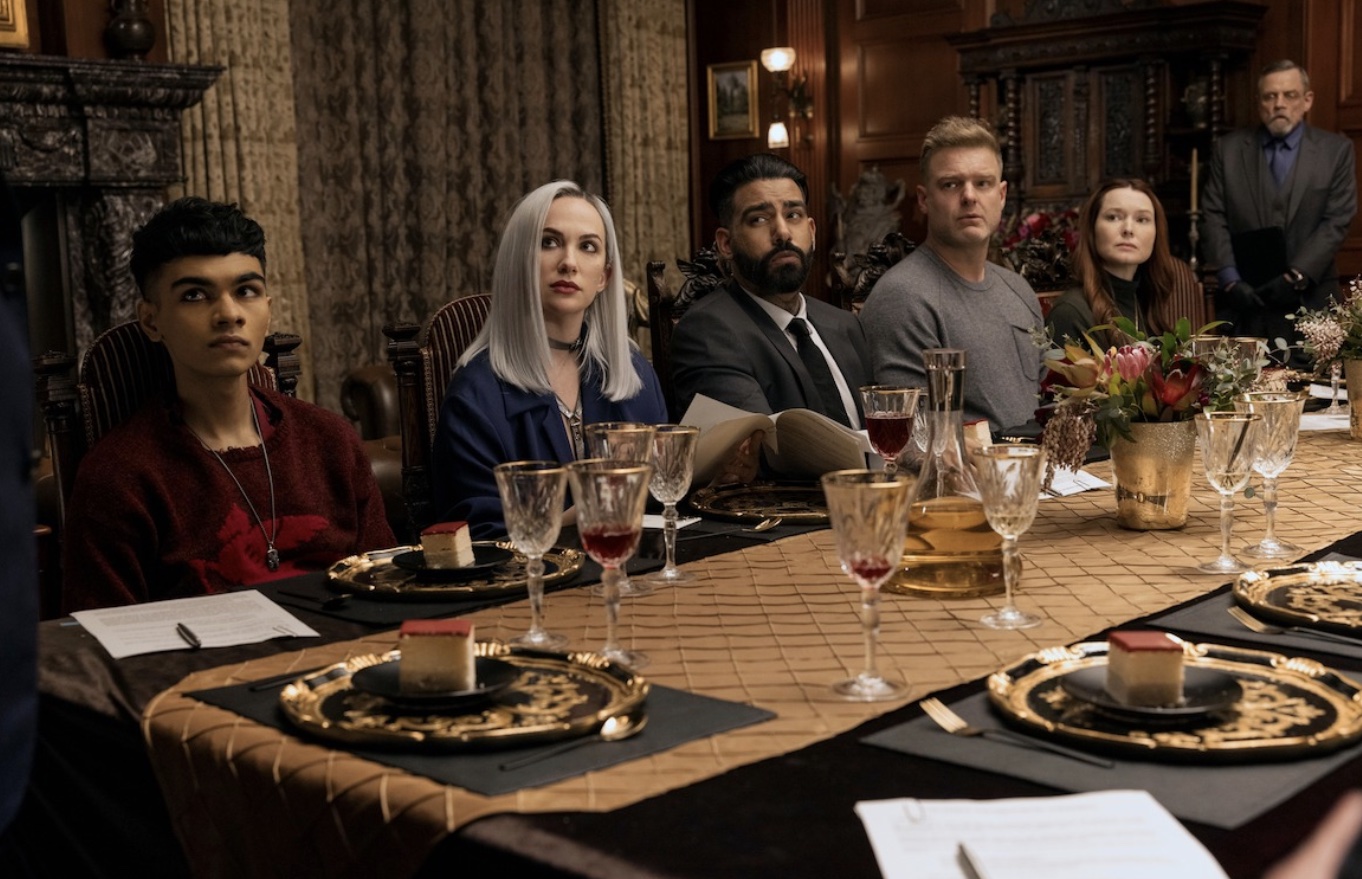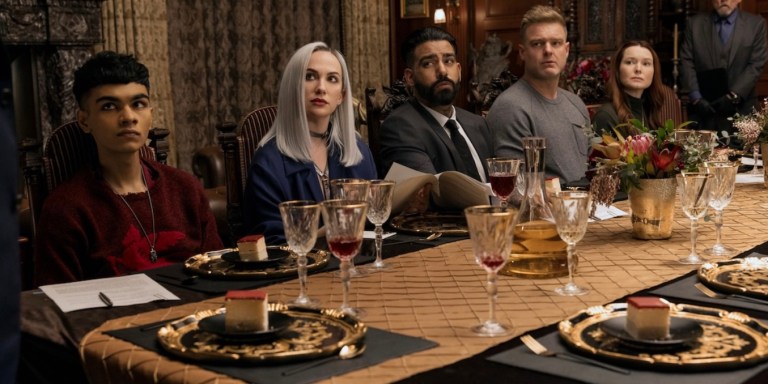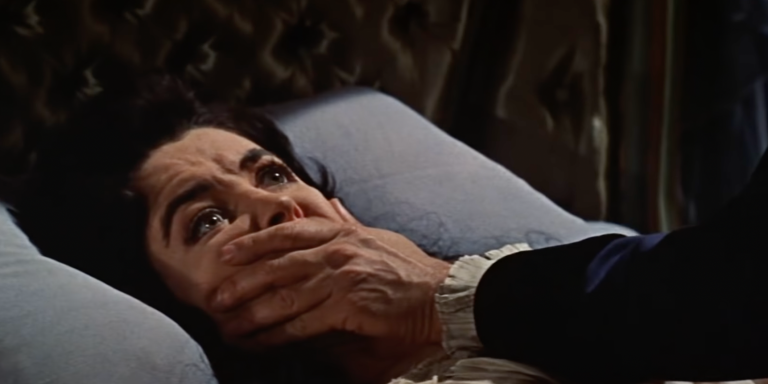How closely do ‘The Fall of the House of Usher’ episodes mirror the Edgar Allan Poe stories that inspired them?
Spoiler alert: This article contains spoilers for The Fall of the House of Usher.
“Once upon a midnight dreary,” we all sat down to watch Netflix’s The Fall of the House of Usher. The Mike Flanagan-helmed series draws on Edgar Allan Poe’s works to tell the story of a family who falls from their high tower of wealth into a series of gruesome deaths. Roderick Usher (Bruce Greenwood/Zach Gilford) and his sister, Madeline (Mary McDonnell/Willa Fitzgerald) grew up with very little means.
After a fateful 1980 New Year’s Eve, in which the siblings meet a mysterious woman named Verna, they take charge of Fortunato Pharmaceuticals and amass a major fortune on the backs of innocents addicted to their drugs. The Usher family seems to be a fictional comparison to the Sackler family, although they are haunted by a mysterious figure named Verna. While the framework of the story relates to Poe’s short story, “The Fall of the House of Usher,” every character’s story relates to a different Poe tale.
Eliza Usher
In Episode 1, titled “A Midnight Dreary” after the opening line of “The Raven,” we learn about Roderick and Madeline’s relationship with their mother, Eliza. Eliza was named after Poe’s real-life mother, but her story is hopefully very different from Eliza Poe’s. Her story and subsequent death are based on Poe’s 1844 short story, “The Premature Burial.”
In the story, the unnamed narrator has a condition called catalepsy that causes him to fall into such a deep sleep that he seems dead. He fears premature burial so much that he becomes obsessive, refusing to leave home and building an elaborate tomb. He eventually wakes in a dark, confined space, but it’s not a tomb—it’s a boat! Eliza, however, actually is prematurely buried. She suffers from a chronic pain disease that gets so severe, her kids think she’s dead when she’s just asleep. They bury her in their yard, but she crawls out … and attacks their biological but absentee father, William Longfellow, the CEO of Fortunato.
Prospero “Perry” Usher
Episode 2 is called “The Masque of the Red Death,” a very fitting nod to Poe’s 1842 short story. The story’s main character is even named Prince Prospero, like in the series. Both men throw masquerade parties, during which all of their guests die. In the story, Prospero throws the party for nobles hiding from a bleeding plague called the Red Death. In the series, he throws it to show his family that he can live up to the Usher name. Plus, the deaths are both catapulted forward by a mysterious masked figure. In the Poe tale, the figure is the embodiment of the Red Death, while in the series, it’s Verna.
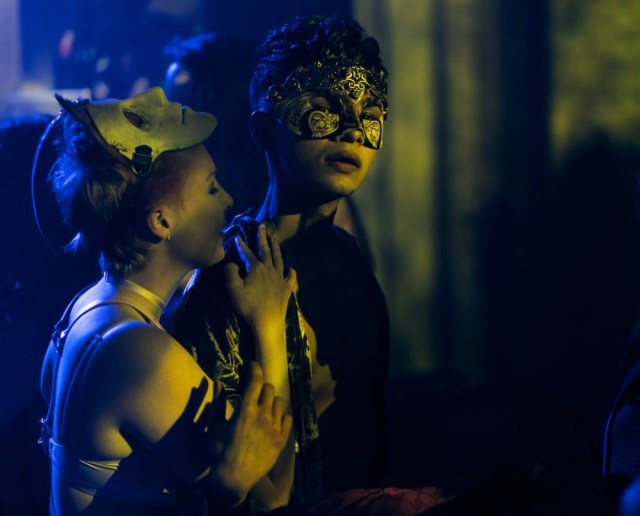
Camille L’Espanaye
Camille’s death episode, titled “Murder in the Rue Morgue,” is almost directly based on Poe’s 1841 short story, “The Murders in the Rue Morgue.” Camille gets her name from one of the two women who die in Poe’s original story, and like the story’s detective, Camille decides to investigate Victorine’s unethical experiments for her personal amusement. In both tales, Camille dies brutally at the hands of a primate, although the lab and experimentation bit is unique to the Netflix series.
Napoleon “Leo” Usher
Episode 4 is based on Poe’s 1843 short story, “The Black Cat,” in which an unnamed narrator loves pets until he perversely starts abusing them. In both the story and the series, the main character descends into madness thanks to substance and alcohol abuse. After a bender, the protagonist worries about what they’ve done to their cat. In the series, Leo’s boyfriend’s cat is dead in the morning, so Leo does what he can to replace the cat without his boyfriend noticing the difference.
In the story, the narrator is already driven to madness when he hangs his cat with a noose, but decides to replace the cat after this. In both instances, the replacement cat drives the protagonist to true madness. Leo gauges out the cat’s eyes, just like the narrator did to his first cat, and the cats live in the walls. In the end, Leo dies by attacking the cat and going over the balcony, but the theme of being driven to madness by guilt in both stories is the same.
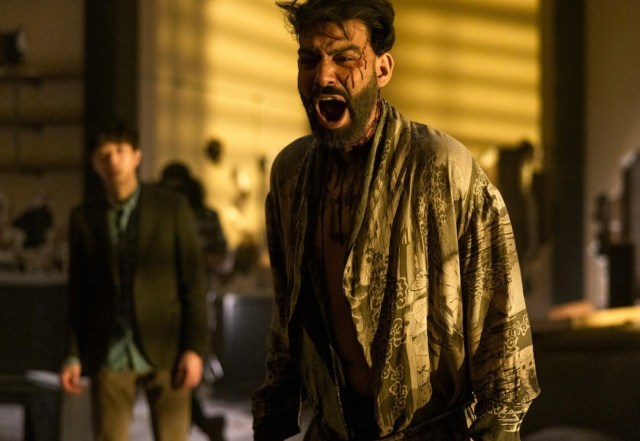
Victorine Lafourcade
While Victorine gets her name from a character in “The Premature Burial,” her fatal episode is called “The Tell-Tale Heart,” based on the 1843 story of the same name. In both stories, the protagonists are playing up their sanity after murdering someone they love very much. In the original story, the narrator dismembers their victim and hides them in the floorboards. When they start hearing sounds, they believe it’s the beating heart of their victim.
This mirrors Vic’s story, when she hears the sound of the artificial heart she put in her girlfriend’s corpse. This also differs from its origin story in that instead of dismembering her girlfriend’s body, she keeps the corpse propped up in an empty room. In the story, the narrator’s guilt leads them to confess, while in the series, Vic’s guilt and desire to succeed leads her to stab herself in the chest.
Tamerlane Usher
Episode 6 is titled “Goldbug,” which refers to Tamerlane’s health and wellness company that shares the name of Poe’s short story, “Gold-Bug.” However, her death is based more on the 1827 poem, “Tamerlane,” and the 1839 short story, “William Wilson.” (Funnily enough, Tamerlane’s husband, Bill, is named after William Wilson.) Tamerlane is a lovelorn warlord in the poem, and in the series, she marries a “peasant” and uses her relationship to feel powerful.
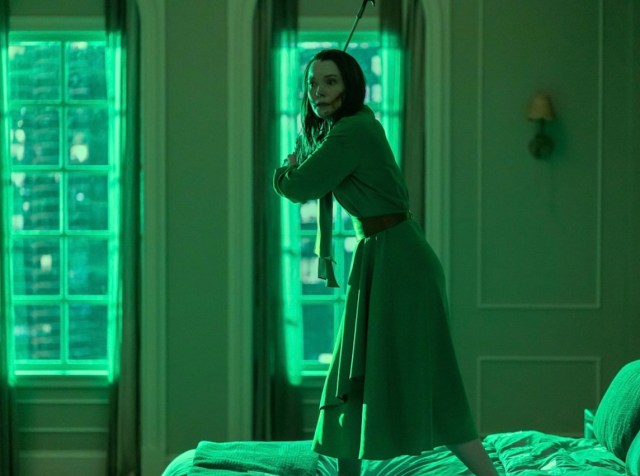
In the story, however, William is haunted by a doppelganger. In the series, Tamerlane is haunted by the woman who plays her while dining with Bill. And in both stories, the protagonist confronts their double … and ends up killing themselves. As mirrors and doubles conquer the story, Tamerlane’s death by mirror shard is still as bloody and gruesome as any of the Ushers’ deaths.
Frederick Usher
Leading up to Frederick’s death, he tortures his already-burned wife, Morella “Morrie” Usher, by drugging her into paralysis and pulling out her teeth with pliers. This also happens in Poe’s 1835 story, “Berenice.” But Frederick’s death mirrors the death and torture by pendulum in “The Pit and the Pendulum,” Poe’s 1842 short story. In the series, Frederick is tasked with knocking down the building in which Prospero threw his party, but when Frederick goes in before the destruction, he accidentally paralyzes himself with the help of Verna. He’s forced to stare at the ceiling as the destructive pendulum swings into his abdomen.
Rufus Griswold
In the final episode of The Fall of the House of Usher, we finally learn who the Ushers murdered and how. His death is based on Poe’s 1846 short story, “The Cask of Amontillado,” which is told from the murderer’s perspective, like in the series. In both versions, the murderer lures the victim into a catacomb-like area and kills them by entombing them behind a wall. And in both, the body was never found.
Roderick and Madeline Usher
Throughout the series, Roderick and Madeline’s story maps closely with Poe’s “The Fall of the House of Usher.” Throughout the series, Roderick and Dupin hear sounds coming from the basement, which Roderick says is Madeline. We learn in the final episode that Roderick poisons Madeline’s drink with cyanide and mummifies her so that she can have a pleasant death and live forever as “a Queen.”
This is based on Poe’s satirical story, “Some Words with a Mummy.” But Madeline isn’t fully dead. She marches upstairs, her eyes replaced with stones, and she strangles her brother to death. As this violence ensues, their house collapses upon them.
